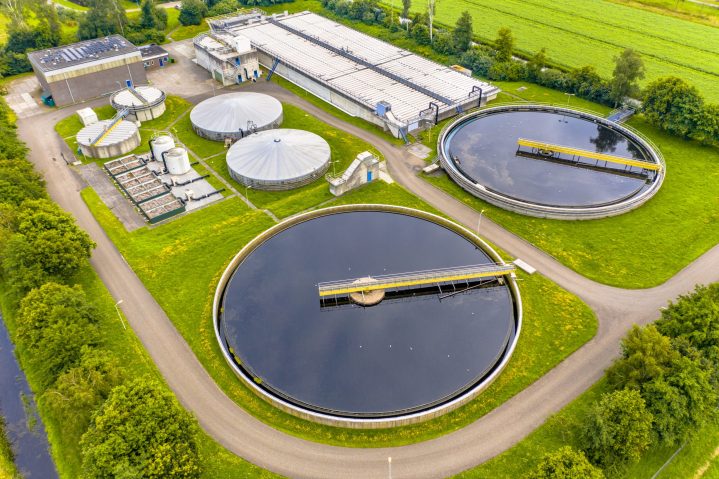Every so often, a new study about plastic-eating bacteria gets published in a scientific journal. Shortly thereafter, it flashes across the internet as it gets picked up by a flurry of environmental blogs, science and tech websites, and even national news outlets. But no matter what scientists may have discovered in this particular study, the stories you see in the media always seem to take the same spin: some variation of “these new plastic-eating bacteria will help us save the world from plastic pollution!”
Now don’t get me wrong – that’s an extremely exciting prospect, and it’s easy to see why that angle resonates with readers. But it’s also disingenuous to the point of being problematic.
I hate to be the bearer of bad news, but plastic-degrading bacteria aren’t going to save the planet. They are an amazing discovery that, unfortunately, isn’t likely to make a significant dent in Earth’s pollution problem anytime soon – and definitely isn’t going to save us from the impending climate catastrophe.
Here’s why plastic-eating bacteria aren’t the silver bullet that most headlines seem to suggest they are.

Off the rails on a crazy strain
Perhaps the most significant reason that plastic-eating bacteria haven’t rid the world of plastic pollution yet (and probably won’t do so in your lifetime) is that we’ve only identified a small handful that can significantly degrade plastic.
Arguably the most well-known and widely publicized one is Ideonella sakaiensis, a strain of bacteria that was discovered in 2016 in soil samples taken outside of a plastic bottle recycling facility in Japan. Ideonella is exciting because it’s particularly adept at breaking down polyethylene terephthalate (PET) – the plastic we use to make things like plastic bottles and synthetic fleece. In the right conditions, scientists have shown that these microbes can fully degrade PET in about six weeks.
But despite how promising this might sound, it’s important to understand that Ideonella is just one microbe that eats one type of plastic – and there are thousands of different plastics in the world. PET only accounts for a small fraction of global plastic waste.

Ideonella is ill-equipped to tackle anything that isn’t made of PET. It can’t eat bottle caps or plastic straws (polypropylene), milk jugs or shampoo bottles (high-density polyethylene), grocery bags or cling wrap (low-density polyethylene), packing peanuts or foam cups (polystyrene), rain boots or credit cards (polyvinyl chloride), sponges or foam insulation (polyurethane).
Now, to be fair, there are organisms that can break down some of these other common plastics. Ideonella isn’t the only ace we have up our sleeve. Some species of mealworm, for example, can eat and break down styrofoam, and scientists have shown that specific types of fungi can degrade polypropylene by up to 90%. But for the vast majority of plastic types in the world, we haven’t yet identified an organism that can break them down completely.
Ultimately, In order to address the rainbow of different plastics littered throughout our world, we’d need to discover (or perhaps engineer) additional strains of specialist bacteria that are more adept at decomposing different kinds of polymers. And even with modern advances in things like genetic engineering and directed evolution, identifying more organisms that can munch down plastic will be a huge (and expensive) undertaking.
And heck, even if we did find all the plastic-munching microbes we needed, our troubles still wouldn’t be over.
Catch and release
Let’s imagine for a moment that we somehow managed to identify thousands of new plastic-eating organisms like Ideonella that could collectively help us gobble up all the different polymers that we’ve littered across the planet. Let’s also imagine we could propagate them in large numbers. Sadly, even at that point, we’d still have a problem: deployment.
Bacteria aren’t like honeybees. We can’t just plop them in a landfill and expect them to navigate directly to a food source that’s sitting in the distance. They typically can’t travel very far without some kind of external help (like wind, or an ocean current, or a bulldozer pushing a pile of garbage), and most aren’t particularly hardy – especially when faced with unfamiliar environmental conditions.

“Oftentimes when you take bacteria that are grown in the lab and put them in a natural environment which is very complex, they don’t always do so well because of the bacteria that are already there,” says Karl Rockne, associate dean at the University of Illinois, Chicago. “It truly is survival of the fittest. So what’s been found is that a specialized microorganism, oftentimes when added to the environment, usually just gets outcompeted.”
In other words, we couldn’t dump barrels full of these little buggers into the Great Pacific Garbage Patch and have them clear out all the plastic like some sort of microbiological drain cleaner. Most wouldn’t survive long enough to find a speck of polyethylene to nibble on.
A more realistic option would be to deploy plastic-eating bacteria in a way similar to how we already deploy specialist bacteria inside wastewater treatment facilities: corral them in large vats, then feed them whatever waste product we’re trying to get rid of.
Facilities like this “are a massive infrastructure which already exists,” says Rockne, “and all kinds of human waste products are funneled through them. And now we’re recognizing that these can be a source of recovering products. And one of those, for example, is plastics and other various chemical feedstocks. So these kinds of treatment facilities are very, very promising to prevent further release of plastics to the ecosphere.”

But even Rockne admits that this approach has its limitations. Addressing plastic waste before it’s released into the environment is one thing. Addressing that waste after it’s already out there is a whole different ball game.
“That’s a much more challenging issue,” he says, “And that’s why I think there’s a lot of work going on to understand how these things are broken down in those types of environments. It’s going to be challenging to implement a field-scale remedial strategy there.”
Bigger fish to fry
Even if we could overcome all the logistical hurdles required to deploy plastic-eating bacteria as a biological weapon against pollution, we’d still have to confront the uncomfortable fact that plastic pollution is, in the words of climate journalist David Wallace Wells, “a climate red herring.”
“While plastics have a carbon footprint,” he writes in his book The Uninhabitable Earth, “plastic pollution is simply not a global warming problem – and yet it has slid in into the center of our vision, at least briefly, the ban on straws occluding, if only for a moment, the much bigger and much broader climate threat.”
That’s not to say that cleaning up plastic waste isn’t important. It definitely is, and removing plastics from the environment is an extremely worthwhile pursuit. But because plastic pollution is largely unrelated to the amount of carbon pollution in our atmosphere, no amount of plastic-eating bacteria will save us from melting glaciers, rising oceans, year-round wildfires, extreme weather events, or any other climate-related catastrophe.
So next time you see plastic-eating bacteria in the headlines, don’t let them lull you into a false sense of security. Plastic-eating microbes aren’t the solution to all of Earth’s environmental problems, and it’s going to take a hell of a lot more than garbage cleanup to get the planet back on track.




